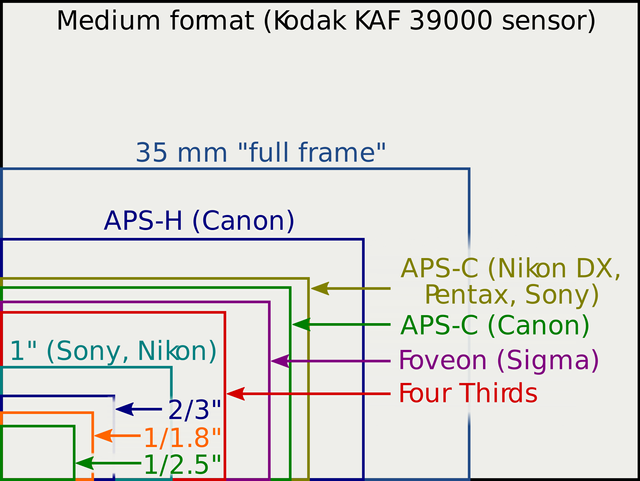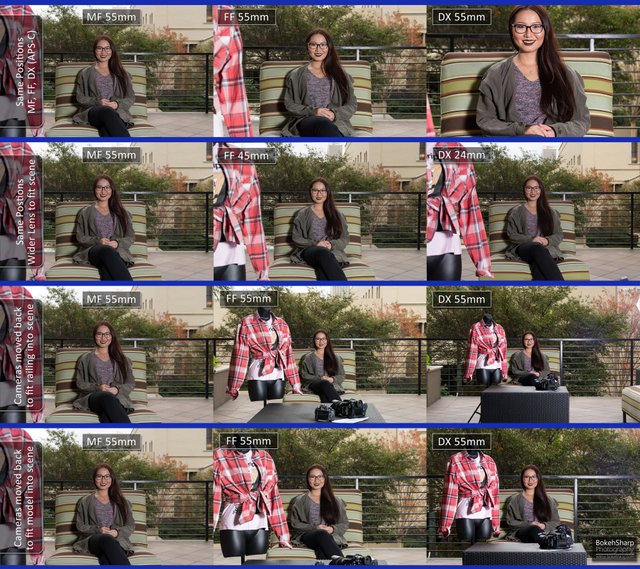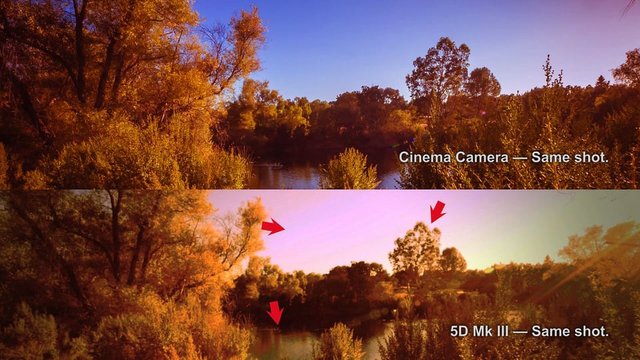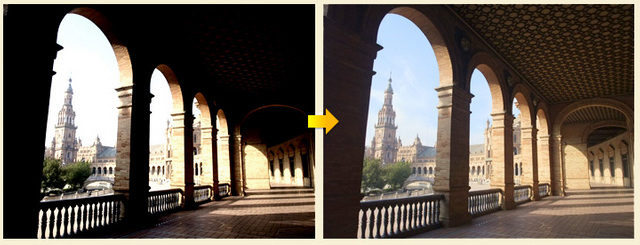What makes a camera great - Part 2: Sensor
When it comes to cameras, or rather the images they produce, beauty is often in the eye of the beholder. Nevertheless, I shall try and both qualify and quantify what makes a camera better than the other. Please note that this is purely my personal perspective on the matter and by no means an objective one.
Please catch up to Part 1: Introduction and Optics here - https://steemit.com/photography/@liberosist/what-makes-a-camera-great-part-1-introduction-optics-and-shutter
This part will be all about the sensor - the silicon chip that captures the image.
Size
There's a massive difference between the size of a smartphone sensor and a DSLR, for example. An iPhone 7 Plus has a 1/3" sensor diagonal, with an area of 17.30 mm2. A Samsung Galaxy S8 has a much larger 1/2.3" sensor with an area of 29.7 mm2. A Canon 5D, by comparison, has a gargantuan 860 mm2 full frame sensor. That's nearly 50x as large as the iPhone 7 Plus sensor!

All things being equal, the larger the sensor, the better. Typically larger sensors offer higher resolution, greater dynamic range, better sensitivity - all aspects I shall discuss below. But things are rarely equal. Sometimes, a smaller sensor may outperform a larger sensor due to superior technology and processing. Indeed, a modern smartphone captures better photos than a full frame DSLR from over a decade ago, despite its sensor being 1/50th the size.
Optical impact of sensor size
Given the larger sensor, it takes a longer focal length lens to match the same field of view from a smaller sensor. I debated adding this section, as it's largely a creative thing, but subjectively it does make a big difference to which camera you'll choose. As expected, this means for the same field of view, larger sensors have -
Wider perspective - Given identical lens and subject size (requiring the camera to be further behind), a larger sensor will have a much wider perspective.
Shallower depth of field - Given identical field of view and aperture, a larger sensor will always have a shallower depth of field.
Bokehblog has a quite excellent test which demonstrates both phenomena clearly.

Note that MF - Medium Format, FF - Full Frame, DX - APS-C. In terms of size, MF > FF > DX. The second strip shows matched field of views between the three sensor sizes, using appropriate lenses, and all things equal. It's clear to see that the MF has the shallowest depth of field (click on the link for full resolution). The fourth strip demonstrates the difference in perspective. The smaller DX sensor has a much more compressed perspective, even though the subject is the same. You can only see the trees!
Of course, these are subjective parameters. A smaller sensor is pretty great for deeper depth of field, while a larger sensor is better for a less compressed perspective.
Resolution
Ah, the number marketing departments throw around - "My megapixels are more than your megapixels". Resolution is the finest detail a camera can capture. Importantly, the actual resolution of a camera is very different from the sensor's resolution. Most sensors today use a single Bayer pattern chip, with alternative R-G-B-G pixels. Each pixel can only capture light from either R, G or B. These are then extrapolated by looking at nearby pixels to create a viewable image. This is a compute intensive process and thus depends on the processing pipeline. More on this in Part 3. So while it's true that a 12 MP camera may feature a 12 MP sensor, the end resulting photo will never be 12 MP, and different 12 MP sensors can produce different actual resolution.
Dynamic range
Arguably, this is the most important factor for most professional photographers and cinematographers. High contrast situations which have a bright light sources as well as dark patches are particularly challenging, and what separates professional cameras from consumer ones.

(Source)
In the above example, it's clear to see that the Blackmagic Cinema Camera has a higher dynamic range than Canon 5D Mark III. The 5D is unable to capture detail from the bright sky, instead blowing out and producing inaccurate colours. At the same time, it's also unable to capture detail in the dark patches - it just shows up as featureless black. On the Cinema Camera, however, you can still see the greenery in the shadows.
The difference between a smartphone camera and a high end cinema camera is quite incredible as far as dynamic range is concerned. A typical smartphone camera can capture maybe 7-8 stops of dynamic range, while a high end cinema camera can do 15. That may not sound like much, but do note this is an quadratic scale. So, your smartphone can actually capture less than 100 times the range as a high end camera! This is why smartphone cameras have to use bracketing HDR techniques to capture a usable image. No such luck for videos though!
Speed
This one's simple - how fast a camera can capture images. For still cameras this is the burst speed, while for motion cameras this is the frame rate. Of course, this requires all three components - the sensor, the processor and the recorder to be powerful. Many cameras may offer a higher frame rate at a lower resolution - this is typically an indication of a processing or recording bottleneck rather than a sensor one.
The fastest cameras are made by Phantom, some doing hundreds of thousands of frames per second! For still photography, 20 stills per second in burst is usually considered adequate for most situations.
Sensitivity
Some would call this "speed", but let's call it sensitivity. Ever notice how your smartphone camera is terrible in low light? It barely produces a viewable image, and it's most often overrun with ugly noise.
The secret to high sensitivity is low pixel density and sensor technology. Smartphones typically have poor sensitivity because a lot of pixels are crammed into a small sensor. For example, a Sony a7s has a sensor 50 times larger than iPhone 7 Plus, yet both feature the same resolution count - 12 MP. Thus, each pixel on the a7s is 50 times as large, and able to capture much more light. This is why a Sony a7s can produce clean images even at ISO 25600 while the iPhone 7 Plus is already a noisy mess above ISO 400.

(Source)
Of course, it also helps that the a7s has superior sensor tech! This also demonstrates a trade-off between resolution and sensitivity given identical sensor tech and size. This is why Sony has a7r and a7s. One has excellent resolution, while the other has excellent sensitivity. Recently, Canon has followed the same pattern with 5DS, but they don't quite have a competitor to the a7s.
There are other intricacies to sensors of course; such as different types of sensor technology like the 3-sensor array, or other patterns, or the bit depth of the ADC.
In the concluding Part 3, we shall discuss the processing and recording pipeline.

Excellent analysis. I own an old DSLR and I must say that my phone outperforms it.
Yes, sensor technology has come a long way. Your DSLR might still be better in low light though - that's where the larger sensor size really does count. Though modern smartphones have pretty advanced noise reduction techniques. More on that in part 3!
can't wait. keep them coming.
Quality overview. Keep up this series.
This is very helpful! I'm looking to get into photography and this surely will help me to find a suitable camera!
excellent post! i follow you!
fantastic @liberosist !